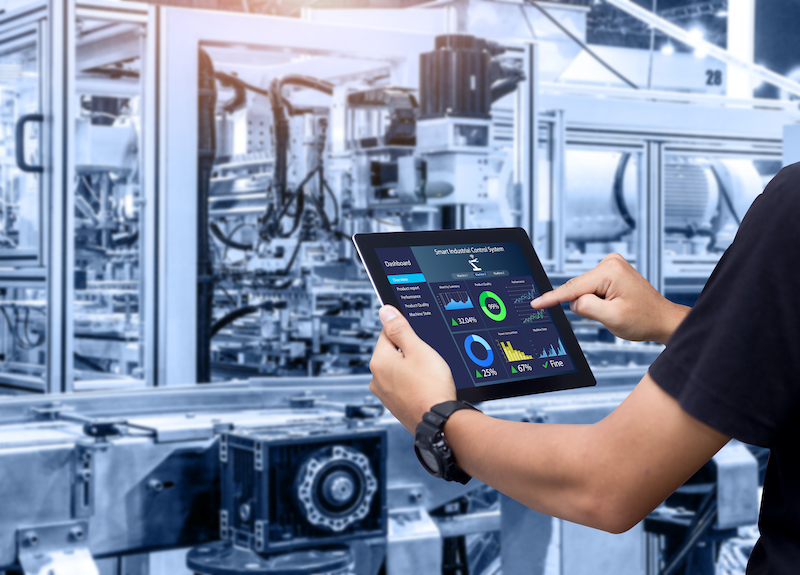By Kassie Teagarden, LAPP Tannehill
Industrial automation cables are the backbone of modern manufacturing processes, facilitating the exchange of data between devices, sensors, and controllers.
Industrial automation cables and wires play a crucial role in transmitting signals, data, and power within industrial automation systems, offering resilience in challenging industrial environments.
The market for these specialized cables and wires is steadily growing, driven by the widespread adoption of automation systems across diverse industries such as manufacturing, oil and gas, automotive, and pharmaceuticals.
So, why is there a surge in demand for industrial automation cables in the market right now? Here are some of the driving factors behind the industrial automation in modern manufacturing:
Industry 4.0 & Smart Manufacturing
The advent of Industry 4.0 has ushered in a new era of smart manufacturing, where interconnected systems, data analytics, and automation converge to create highly efficient and adaptive production environments.
Industrial automation cables are at the forefront of this transformation, enabling the connectivity and communication required for the implementation of smart factories.
Industry leaders are striving to integrate automation systems, data analytics, and IoT to optimize industrial processes, fostering a demand for advanced wires and cables that support high-speed data transmission and connectivity.
Sustainable & Renewable Energy
Another significant trend is the industry’s heightened focus on energy efficiency and sustainability.
Industrial automation cables play a crucial role in connecting renewable energy systems to the main power distribution network and facilitating communication between various components.
With increasing investments in energy-efficient automation systems, there is a corresponding need for manufacturers and facilities to integrate specialized cables and wires to ensure optimal performance and minimize energy consumption.
Seamless Connectivity for Intelligent Systems
Industrial automation relies heavily on the seamless connectivity of devices and systems.
Industrial automation cables, especially bus cables, act as the arteries, facilitating the smooth flow of data between programmable logic controllers (PLCs), sensors, actuators, and other components.
Industrial environments are often rife with electromagnetic interference from motors, power lines, and other equipment. Bus cables are designed with shielding and insulation to protect the transmitted data from EMI, ensuring a reliable and stable communication network.
This interconnectedness is crucial for the creation of intelligent, responsive manufacturing systems.
Real-Time Data Transmission and Sensor Integration
The proliferation of sensor technologies in industrial automation has driven the need for specialized cables that can handle the real-time transmission of data.
Sensor cables play a vital role in connecting sensors to control systems, allowing manufacturers to capture and act upon real-time insights. This integration is pivotal for quality control, predictive maintenance, and overall process optimization.
Industrial Automation Cables Future Growth Projection
The industrial automation cables and wires market is anticipated to experience substantial growth in the foreseeable future, driven by the expanding adoption of automation systems and the imperative for enhanced data transmission speeds and connectivity in industrial processes.
What types of Industrial Automation cables does LAPP Tannehill offer?
Using these types of cables together supports industrial automation goals:
Sensor Cable: transmits signals between sensors & controllers for precise data transfer
Bus Cable: facilitates communication between different devices within automation system
Power Cable: provides electrical power to entire system
The seamless integration of sensor cables, bus cables, and power cables creates a comprehensive infrastructure that enhances the efficiency, responsiveness, and adaptability of industrial automation systems.
This triad of connectivity enables manufacturers to create intelligent, interconnected ecosystems that can evolve with the demands of modern production.
Sensor Cables
Engineered to transmit signals between sensors and controllers, sensor cables ensure the accuracy and reliability of data transfer. These cables act as the silent conductors of information, enabling real-time monitoring and control in industrial processes.
Use Case 1: Manufacturing Quality Control
In a manufacturing environment, sensor cables connect sensors to the central control system, enabling real-time monitoring of production variables such as temperature, pressure, and quality parameters. This data ensures prompt adjustments, minimizing defects and enhancing overall product quality.
Use Case 2: Condition Monitoring in Predictive Maintenance
Sensor cables are integral in predictive maintenance systems, connecting vibration sensors, thermocouples, and other condition-monitoring devices to assess equipment health. Early detection of anomalies allows for proactive maintenance, minimizing downtime and extending the lifespan of machinery.
The sensor cables that LAPP Tannehill offers are LAPP UNITRONIC® data and communication cables designed specifically for applications used in industrial machinery and plant engineering.
These high-quality data network cables and field bus components provide a solution from simple transmission of control signals in sensor/actuator wiring to fieldbus signals in more complex network structures.
Bus Cables
Bus cables,also known as fieldbus cables, are specialized cables designed to transmit data between different components of an industrial automation system.
These cables act as the communication backbone, connecting programmable logic controllers (PLCs), sensors, actuators, and other devices within a network.
Unlike traditional point-to-point wiring, bus cables allow for a more centralized and organized approach to data exchange, enhancing the overall efficiency of automation systems.
Use Case 3: Centralized Control in Material Handling
In material handling systems, bus cables connect PLCs, sensors, and actuators, allowing for centralized control. This results in efficient material flow, precise positioning, and coordinated movements, ultimately optimizing the entire material handling process.
Use Case 4: Real-Time Data Exchange in Robotics
Robotics heavily relies on bus cables to establish communication between robotic arms, vision systems, and control units. This seamless communication is vital for precision movements, enhancing the flexibility and adaptability of robotic systems.
Other Applications of Bus Cables in Industrial Automation:
Manufacturing and Assembly Lines
Bus cables facilitate communication between PLCs, sensors, and actuators on manufacturing and assembly lines, enabling seamless coordination and control of various processes.
Process Control in Chemical and Petrochemical Industries
In industries where precise control of chemical processes is essential, bus cables play a vital role in connecting sensors and control systems for monitoring and adjusting variables in real time.
Building Automation
In building automation, bus cables connect devices such as HVAC systems, lighting controls, and security systems, enabling centralized monitoring and control for energy efficiency and safety.
As industrial automation continues to advance, the role of bus cables will remain critical in shaping the future of smart and interconnected manufacturing environments.
LAPP Tannehill offers the following bus cable solutions:
РCAN Bus Data Cable : UNITRONIC® BUS CAN
РDeviceNet : UNITRONIC® BUS DeviceNet FD
РAS-i Bus : UNITRONIC® Bus ASi FD Bus Cable in Black, Red, & Yellow
РFOUNDATION Fieldbus : UNITRONIC® Bus FOUNDATION Fieldbus Bus Cable
РINTERBUS : UNITRONIC® BUS INTERBUS FD Bus Cable
РPROFIBUS : UNITRONIC® BUS PB TORSION, HYBRID/COMBI, TRAY, FD
РRS485 & RS422 : UNITRONIC® Bus LD FD Bus Cable
– Other Protocols : UNITRONIC® Bus SAFETY, CC-Link, & Genius Bus Cable
Power Cables
Industrial automation relies heavily on a robust and reliable power infrastructure to ensure the seamless operation of machinery, equipment, and control systems.
Power cables, the lifelines of industrial electrical systems, play a critical role in transmitting electrical energy efficiently and safely within an automated environment.
Power cables deliver electrical energy from the power source to various components such as motors, drives, controllers, and sensors.
The reliability and efficiency of power cables are paramount in ensuring uninterrupted energy supply, preventing downtime, and optimizing the overall performance of automated systems.
Use Case 5: High-Powered Machinery in Manufacturing
Power cables are essential for connecting high-powered machinery, such as industrial presses or injection molding machines, to the power source. This ensures a stable and continuous energy supply, contributing to consistent and reliable manufacturing processes.
Use Case 6: Energy-Efficient Operations with Smart Grids
In smart grid applications, power cables connect automation systems to energy management platforms. This integration allows for real-time monitoring of energy consumption, enabling smart decisions to optimize energy usage and reduce operational costs.
Other Applications of Power Cables in Industrial Automation:
Motor and Drive Systems
Power cables connect motors and drives to control systems, ensuring the efficient transfer of electrical energy for precise control of machinery and equipment.
Distribution Panels and Switchgear
Power cables are integral components in distribution panels and switchgear, facilitating the distribution of power to various sections of the automation system.
Robotic Systems
In applications involving industrial robots, power cables with high flexibility and durability are crucial to support the constant movement and operation of robotic arms.
Power cables are the unsung heroes of industrial automation, providing the necessary energy infrastructure for the seamless operation of machinery and control systems.
In the dynamic landscape of industrial automation, power cables are not just conduits of electricity but essential components driving progress and innovation.
LAPP Tannehill maintains an extensive inventory of gauge sizes, stranding, insulation, and colors of power and control cable.
For more information, reach out to LAPP at 800-633-6339 or visitwww.lapptannehill.com






























































